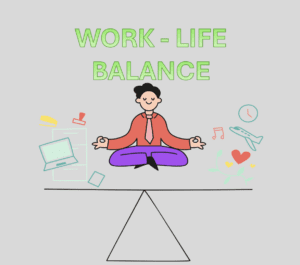The Ims’s of Workplace Culture: What They Are and How to Address Them
A healthy working culture is vital in any workplace, ensuring employees feel safe and happy. However, it can be challenging to detect when your team isn’t feeling their best. Before you know it, you’re dealing with presenteeism, leavism, absenteeism, and pleasanteeism. Unfamiliar with these terms? You’re not alone! They are increasingly common and indicate overall well-being and productivity issues in the workplace.
The Background
Stress and depression account for nearly half of all working days lost in the UK, costing employers *approximately £9 billion annually in sick pay. These issues often reflect poor workplace health and well-being. Understanding these Ism’s is the first step toward resolving them.
Recognising the Characters
Do these employees sound familiar?
- The one who shows up to work even when very ill.
- The stress-harbourer who takes work home or on holiday.
- The one who refuses to take annual leave.
- The one who avoids asking for help, resulting in a high workload.
- The one who can’t say no and works through days off.
Understanding the ism’s
Presenteeism Employees stay at work longer or work while ill, often feeling there’s no other way to complete their tasks. This can lead to burnout and significantly more productivity loss than absenteeism. The digital world has exacerbated this, as employees are constantly connected and feel pressured to show commitment.
What to Look For:
- Frequent mistakes and poor-quality work.
- Poor time-keeping or excessively long hours with little output.
- Working while visibly unwell.
- Low mood and deteriorating relationships with colleagues.
Leavism Employees use their leave for sick days, take work home, or work during holidays. This behaviour crosses the line between working hard and overworking.
What to Look For:
- Chronic online presence and availability.
- Reluctance to use annual leave or concern about handing over projects.
- Cancelling leave for work events.
- Taking work on weekends or holidays.
Pleasanteeism Employees hide stress or issues behind a facade of positivity, leading to surface-level friendships and unhealthy productivity levels.
What to Look For:
- A workplace that avoids discussing well-being and mental health.
- Employees who seem excessively cheerful, potentially masking deeper issues.
Risks of ism’s in the Workplace
Unchecked presenteeism, leavism, absenteeism, and pleasanteeism can lead to stress, burnout, mental illnesses, low morale, and increased resignations.
Taking Action: 5 Strategies
- Clear Absence Policy: Define reasonable absences and ensure employees know how to report them. Avoid overly rigid policies that encourage presenteeism and leavism.
- Monitor Workloads: Hold one-on-one meetings to manage workloads and address issues.
- Role Model Behaviour: Avoid displaying these negative traits to prevent employees from mimicking them.
- Wellbeing Strategy: Develop a strategy that senior managers actively support to reduce presenteeism and other attendance issues.
- Flexible Work Options: If possible, allow flexible or remote work to help employees balance responsibilities and focus better.
Addressing these ism’s is crucial for long-term employee well-being. It involves promoting rest and recovery, focusing on outcomes rather than hours, and nurturing happier employees who are productive both at work and in their personal lives.
*Thrive4Life

